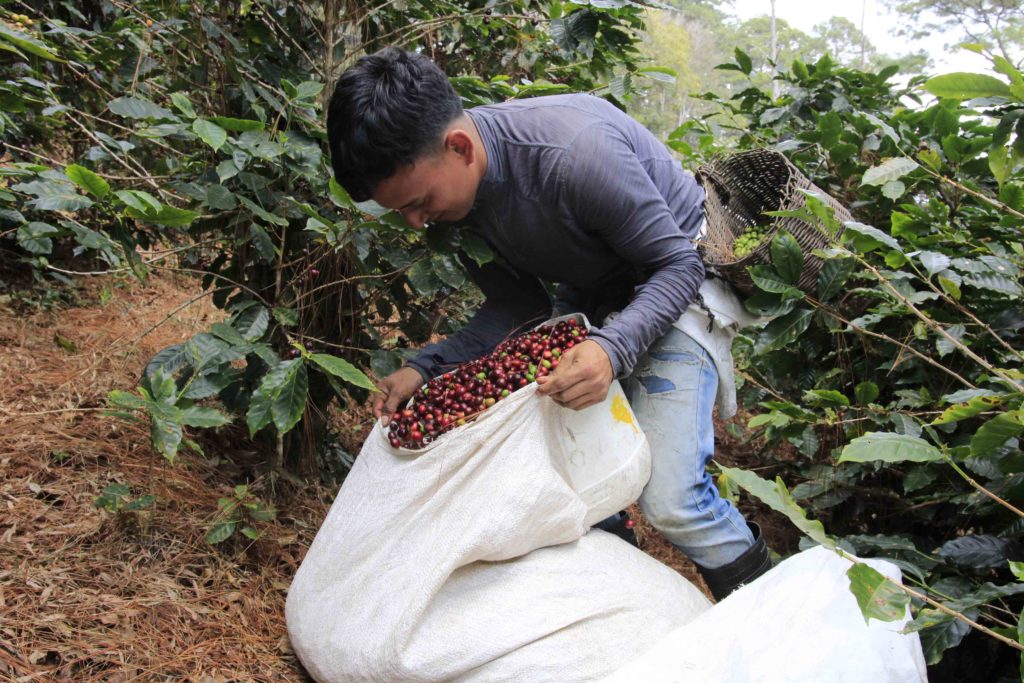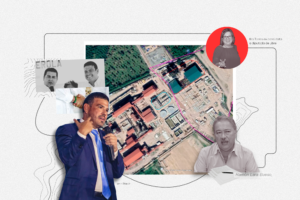In the mountain range of El Merendón, in northern Honduras, coffee is grown in almost three thousand blocks of land, 80 percent of which is found in a nature reserve that provides water and oxygen to the second largest city in the country, San Pedro Sula. Coffee producers are our last hope to preserve and restore this mountain, but due to the lack of State support and inequality in favor of exporters and transnationals, they have to make a crucial decision: implement agroforestry systems to preserve the forest or transition to more profitable but unsustainable farming practices.
Text: Fernando Silva
Photography: Amílcar Izaguirre
Translated by: José Rivera
Under the white dim light of the kitchen, Norbelina is preparing a cup of dark-roasted coffee. She also placed a basket of bread on the table. Her husband, José Ángel Ramos, owns the farm where the coffee was grown.
Don José says that this is not his preferred roast of coffee, he likes it medium roast; yet, he drinks it because he diversified his production to survive the industry. He is a friendly 53-year-old coffee producer, he has a white mustache and tanned skin, and has experienced both success and failure in the 25 years he has been growing this crop. He has won international awards for the quality of his coffee, but has also lost an entire season’s worth of crops due to hurricanes.
He is now searching for ways to reinvent himself, and in witnessing the challenges farmers face in the nature reserve of El Merendón, he affirms cultivating coffee is no longer profitable.
Low coffee profits are largely due to the fact that intermediaries, exporters, and large corporations keep majority of the profits made from selling coffee globally, while producers in El Merendón spend almost half of their income on wages and farm maintenance (pruning, fertilizing, washing and drying). Additionally, the lack of laborers for coffee harvesting as a result of migration to cities within the country and to the United States has caused enormous crop losses.
In March, halfway through harvest season, a few meters away from his house, the fading sunlight was shining on the farm as a strong coffee aroma —a mixture of two varieties— with bitter notes, a result of the dark roast, filled the gray kitchen. José says that it has a “strong” taste, and he does not recommend it to those with a sensitive stomach.
“I know nothing about coffee. I just know how to sow, cut, grind and sell it, but now I’m learning to distinguish flavors and that’s what they’re teaching us at Ihcafe,” he said.
The Honduran Coffee Institute (Ihcafe) supports coffee producers in the country. That day, before sunset, a specialist from Ihcafe along with a delegation of international organizations and a renowned German connoisseur arrived at José’s farm. They spent 30 minutes walking around the farm and taking many pictures.
The visitors noted that direct engagement could attract end buyers such as international coffee brands and roasters to purchase José’s coffee directly, enhancing payment and ensuring fairer deals without intermediaries or exporters.
José and his family remain hopeful, and work hard to produce a special variety of coffee that will appeal to an international market, but he’s cautious now, remembering the bitter taste of broken promises six years before. The exporter who bought his coffee at the time flew him to New York to compete for the Ernesto Illy International Coffee Award. The prize is awarded to the best coffee varieties in the world based on their richness, complexity, and intensity of aromas as well as the elegance and balance of flavors.
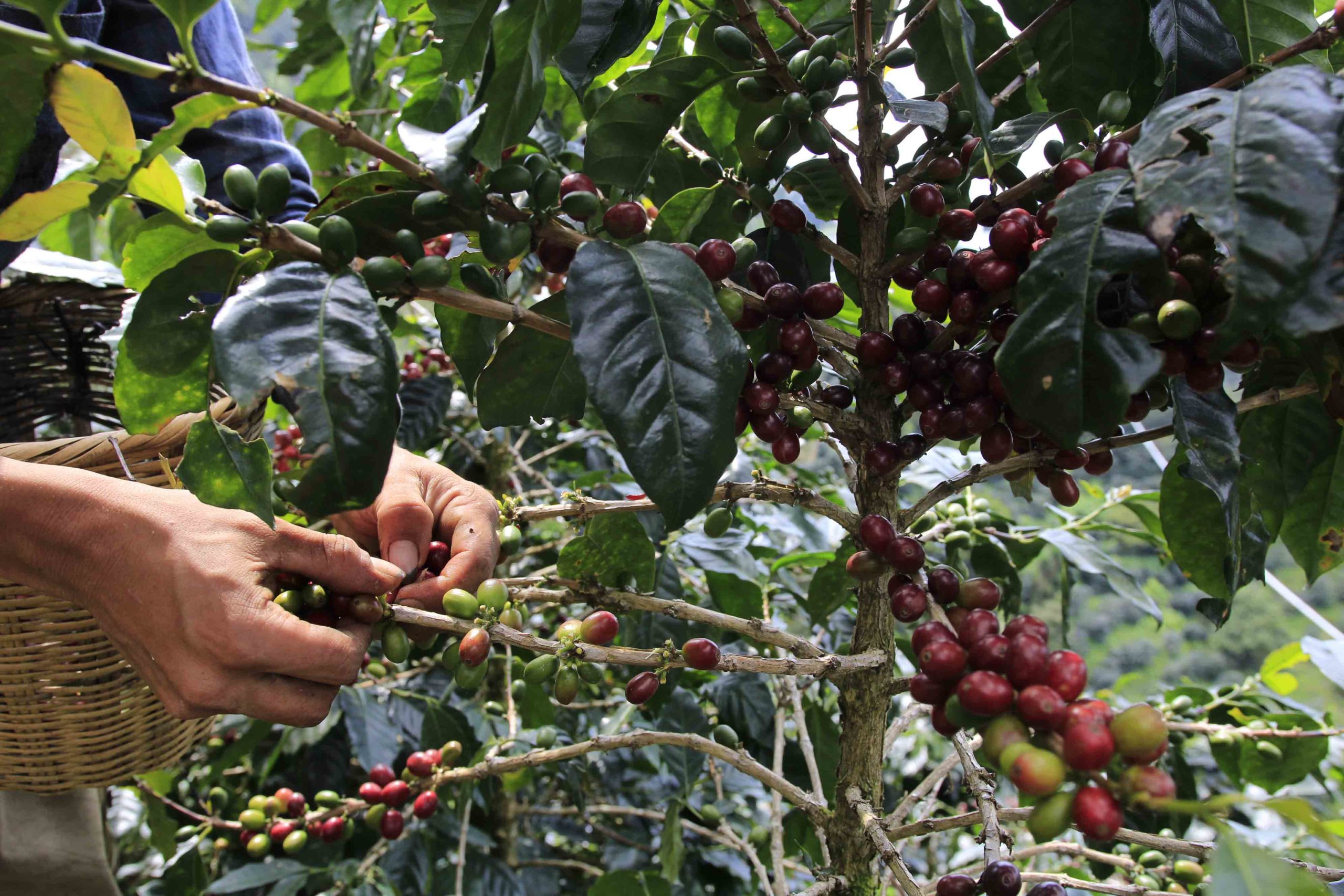
When he returned from that trip, he brought with him the third-place prize and the promise from the exporter that his coffee would now be purchased at a lower price.
José claims that he cultivated the first batches of coffee with great anticipation, but that the price they offered him was lower. José realized that the difference they had promised worked against him, and that the exporter would be the only one benefiting from his labor.
The exporter then sent specialists to supervise José’s farm. They said that they were going to certify sustainable practices. After a number of visits and changes, José asked if the certification was for his farm or the exporter. They said that it was for the latter, and he became more frustrated.
José felt that they were taking advantage of him, and realized how little exporters value the hard work his family puts in to sell them the best coffee possible, as opposed to other producers he argues are not as committed. They decided not to sell them any more coffee and sought other alternatives. He began selling coffee to an intermediary who bought it at roughly the same price, but paid him immediately in cash without paperwork or pointlessly waiting for hours at the bank.
An intermediary is typically a member of the community who acts as a less rigorous buyer, sells the coffee to local exporters, and has a supply agreement with international companies. Intermediaries also lend money to coffee farmers who, at times, go bankrupt and have their properties or cars repossessed because they can’t pay their debts. Intermediaries earn huge profits despite taking no risks and not working in the fields.
After selling to intermediaries for a while, José and his family grew tomatoes, cucumbers, carrots, and other vegetables instead of coffee because these crops can be harvested and sold in a short period of time. Coffee, on the other hand, takes years to grow and demands a large investment to reach optimal production conditions.
José elaborates, “In this region, land use change is a frequent occurrence, particularly when the global coffee prices fall, prompting producers to seek alternative means of survival.” In fact, apart from his coffee farm, José also allocates some of his land for growing vegetables as a contingency plan amidst volatility in coffee prices.
Nevertheless, alterations in the type of crops cultivated could pose significant risks within the protected zone of El Merendón. This is due to the management plan’s strict provision that prohibits the expansion of agricultural areas, necessitating an evaluation of any changes in land use. Moreover, transitioning from the promotion of agroforestry systems in coffee cultivation—favoring shade-grown conditions—to cultivating vegetables requires forest cover clearance to allow direct sunlight, marking a notable difference in agricultural practices.
After that period when José and his family avoided dealing with the coffee industry, personnel from Ihcafe offered technical assistance and incentives to motivate them to grow coffee again. José has since resumed his coffee farming, with the aim of introducing timber and fruit trees to restore tree coverage in the region and to negotiate fair prices for his labor.
“To get the best price we are going to prepare the coffee well to offer the best quality, we are looking for buyers that pay a fair price because we can’t keep going on like this, it’s not profitable. For example, we have to pay harvesters a lot of money to produce a single can of coffee.”
Producers make a small amount of money for each can of coffee and still have to sow, get rid of weeds, fertilize –several times if possible–, get rid of weeds once again, and clean the branches on the coffee plants. After washing, drying, and sometimes grinding the coffee, it is finally ready for transport.
“It’s not profitable, intermediaries always pay the same price despite all the hard work they see us do, that’s why we want to grow specialty coffee and sell it directly to end consumers,” José said as he finished his cup of coffee and the sun was setting in El Merendón.
In recent years, there has been a noticeable rise in the prominence of specialty coffees within the coffee industry. These high-quality beans boast exceptional flavors, cultivated in particular regions with close attention throughout the entire production process, ensuring complete traceability from origin to the cup. Owing to their high quality, these coffees typically come at a higher price point compared to commercial coffee offerings.
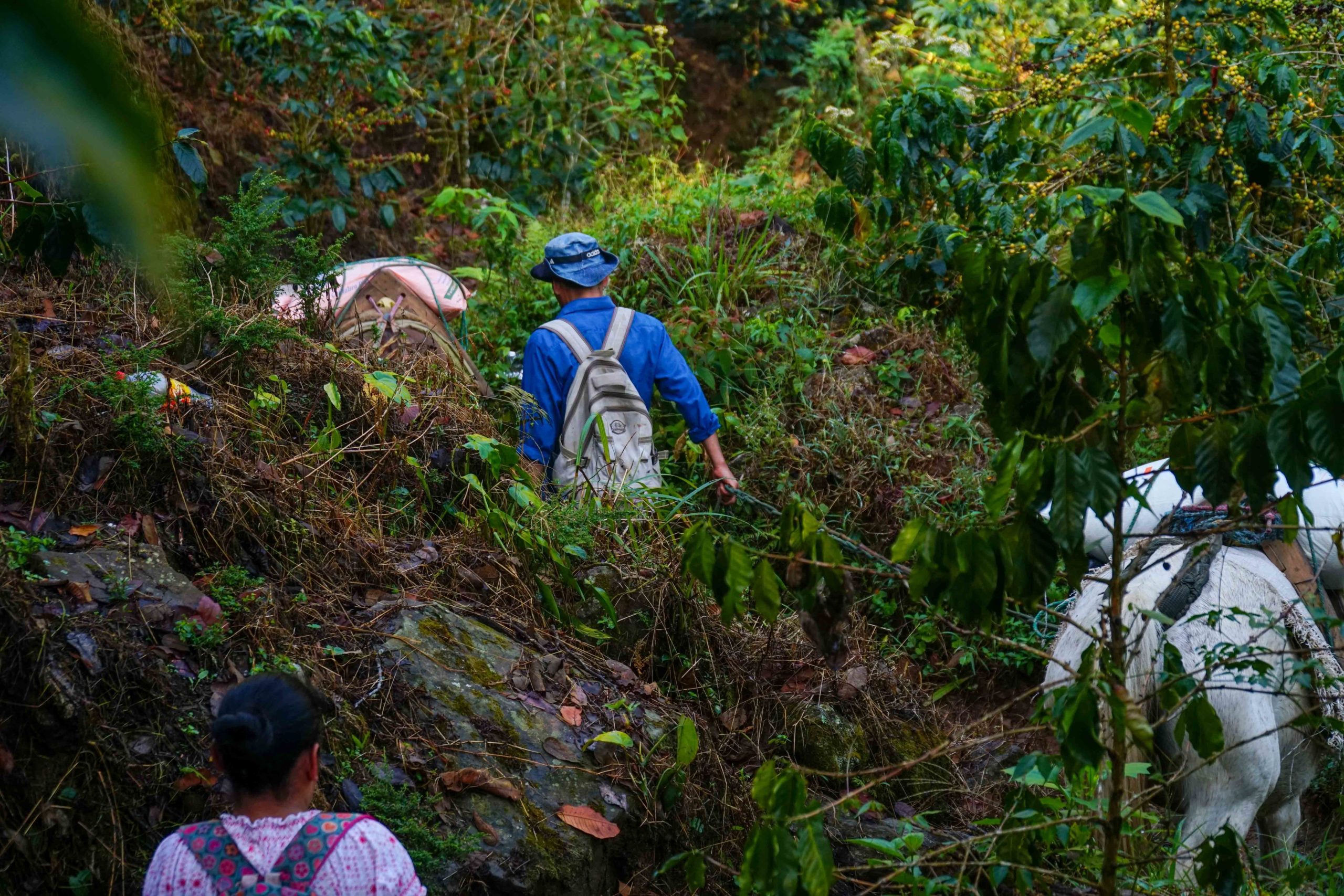
Coffee, that odd crop, which according to history, was brought by Europeans to the Americas two centuries ago, plays a pivotal role in the Honduran economy. Its significance is so profound that it served as the perfect substitute for banana, a crop for which Honduras had an infamous reputation in the last century.
In the early 20th century, O. Henry, a US-American writer, coined the derogatory term «Banana Republic» to describe Honduras’ subordination to the United States and the political and social instability of a country that mostly relied on banana exports. It is possible that the term might evolve to «Coffee Republic» in 2023.
Although Honduras does not entirely depend on coffee to sustain its economy at the moment, exports account for more than 5% of Gross Domestic Product (GDP) and 30% of the total GDP from agriculture. In addition, the International Center for Tropical Agriculture (CIAT) estimates that in Honduras coffee is the main source of income for 110,000 households, 95% of whom are small producers with less than seven acres of land. It is also estimated that there are approximately one million workers in the coffee industry.
A study by CIAT shows that in the 2021-2022 harvest season, Honduras produced 6.202 million quintales (a quintal equals 100 lbs) and exported 6.1 million worldwide, which generated an income of 1,451 million dollars, around 20% of Honduras’ total income.
Honduras is currently the sixth largest coffee producer worldwide, third in Latin America and first in Central America. However, a decline in exports and domestic production is alarming for the country.
Between the period of 2020-2021 and 2021-2022 alone, coffee production dropped from 7.9 to 6.2 million quintales, marking a substantial reduction of 1.7 million quintales of green coffee. José and other producers in El Merendón attribute this issue to a range of factors, including labor scarcity due to migration, the impacts of climate change, and the diminished profitability of the crop caused by inequities in the production chain.
At Ihcafe’s regional office in San Pedro Sula, coffee growers and Ebis Medina, an engineer, work together to find solutions to the drop in production and exports. It is a challenging task but it must be tackled.
Ebis, the specialist who visited José and works with coffee growers in El Merendón, clarified that the decline in coffee exports impacts not only the producers but also presents a national issue that demands attention. As a significant portion of Honduras’ income and GDP relies on this crop.
“Coffee is the main agricultural industry in Honduras, it’s what we’re known for and it keeps the Honduran economy going, so it’s worth investing in it. I tell many producers to think like a businessman and not like a traditional coffee grower because in the end your farm is just like a company, and one of the goals in the technical assistance plan is to make the industry profitable.”
Ebis explained that there is no rival in Central America in terms of coffee production and technology transfer, but when it comes to quality and prestige, Honduras lags behind other countries in the region. To reach that level of prestige, collective action should be taken by all actors involved: producers, Ihcafe, exporters, intermediaries, and roasters.
“We are interested in ensuring that each producer has a minimum 5% section dedicated to specialty coffees, opening them up to diverse marketing opportunities. We also aim to develop brands for producers looking to engage in the coffee industry as a year-round income source, moving beyond the traditional model of solely harvesting and selling coffee, where often their earnings come to a halt.”
Investment and promotion of coffee was a recurring theme in the public discourse during the previous administration. It was even mentioned by former president Juan Orlando Hernández in the United Nations summit, where he demanded better prices in the fundamental stages of coffee production.
Back then, Ihcafe was led by Asterio Reyes, a businessman and close ally of Juan Orlando. There were many complaints about the lack of public accountability in the institution and the coffee industry was linked to the drug trade when a container in Italy holding 600 kilograms of cocaine inside the coffee bags was found. When producers heard the news in 2019, they demanded an explanation from the authorities at Ihcafe but none was given.
Ebis explained that it has been difficult to work together with the current administration.
“The previous administration was involved in the industry and many projects were supported as part of a program called “bono cafetalero” or coffee bonus, but it’s very difficult for us now. There are many opinions out there, some people say that the country has a bad reputation, others say we’re focusing too much on the past, but we want to bring this discussion back and we’re doing so with the support of municipalities,” Ebis explained.
In the mountain of El Merendón, coffee producers say that the current mayor of the municipality in San Pedro Sula, Roberto Contreras, has not taken the time to visit them and even say —laughingly— that he doesn’t know where the place is.
***
Water is carefully boiled to 95 degrees Celsius and then poured into a ground coffee blend of Parainema —from Honduras— and Geisha —from Ethiopia but made popular in Panama—. For a few minutes water and coffee fuse and are then poured from the filter into a transparent glass cup.
This coffee is grown and served in the community of Gallito in the nature reserve located in the mountain range of El Merendón, in the Miramar farm, which is found in the slope of the mountain. From there you can see the mountain range and in the background a glimpse of the Caribbean Sea.
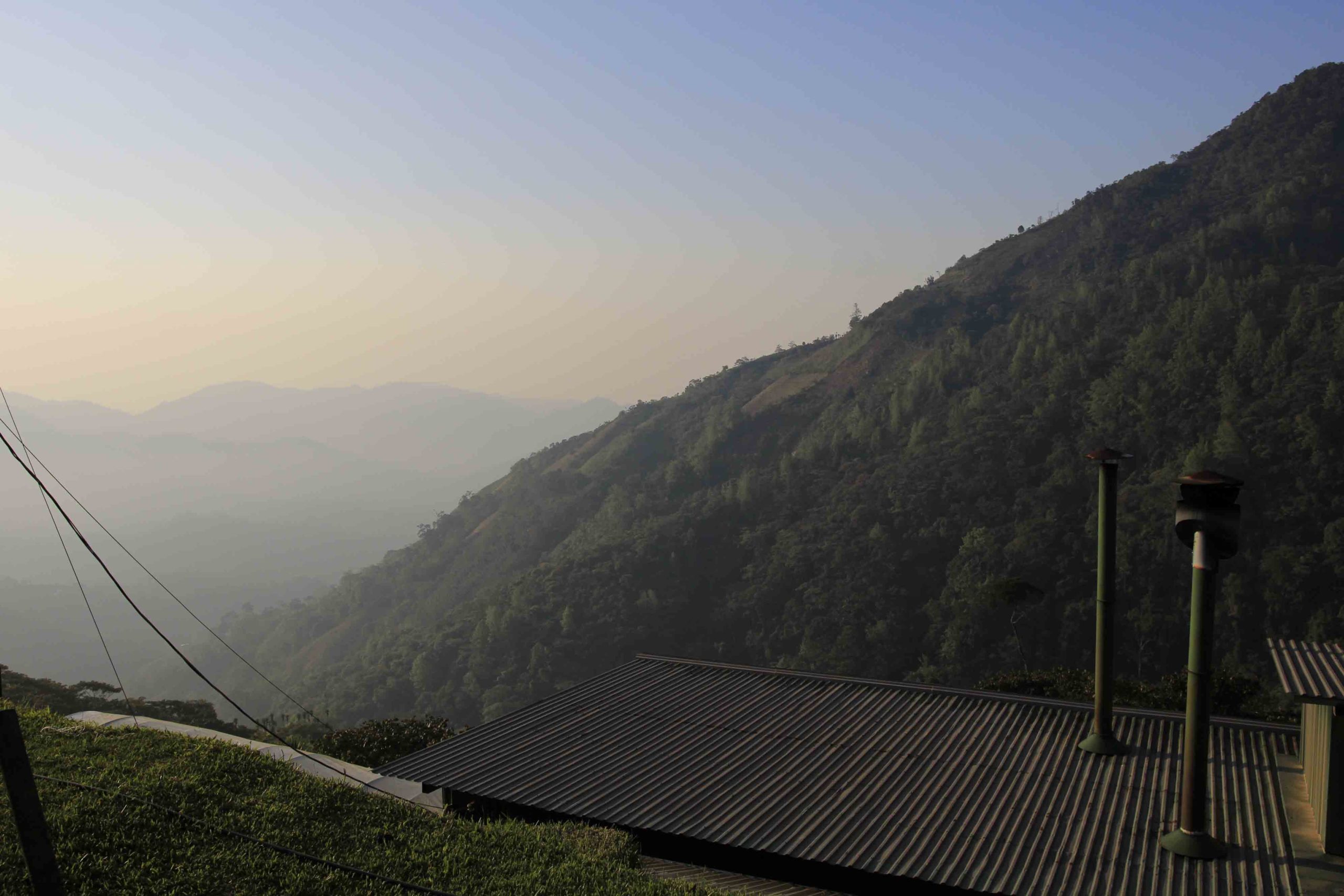
As the sun was setting on the horizon as if falling to the sea, David —who co-owns the farm— served coffee with an intense flavor and notes of caramel, red fruit, and a lactic touch. This variety of black coffee, more like herb tea, is not the dark roast consumed in most households in the country.
Every sip feels like an explosion of flavor and unimaginable complexity.
The grams of coffee on this cup come from the 64,000 quintales produced in the mountain range of El Merendón in the 2021-2022 season, when Honduras produced 6.2 million quintales of coffee. Most of the coffee from El Merendón is grown in the nature reserve, an area that consists of 37,377 acres of land, where the main objective is to preserve the water supply of three sectors: San Pedro Sula, Cofradía, and Naco, where approximately 2.2 million people live.
According to experts, a single pound of coffee can produce around 21 twelve-ounce cups. This means that you can serve more or less 1,365 million cups from coffee grown in the nature reserve of El Merendón. However, the 2020-2032 management plan for the nature reserve, of which the municipality of San Pedro Sula is in charge, stipulates that they are committed to the preservation of water sources, and identified coffee plantations as one of their main threats.
The management plan stipulates that there are bad practices in the production and processing of coffee such as: substituting natural ecosystems to grow crops, introducing new exotic varieties of coffee, applying agrochemicals excessively, building new roads to manage and extract the product and contamination caused by solid and liquid waste created during processing.
The altitude in the nature reserve of El Merendón varies between 60 and 2,242 meters above sea level (MASL) and, as opposed to other nature reserves that consist only of the nucleus and a buffer zone, is divided into four protected area categories: strict nature reserve, restoration, sustainable use, and public use areas. The restoration area, located between 800 and 1,600 MASL, stands out in the management plan and is considered a priority when managing water resources and biodiversity in the medium/high parts of the water basin within the nature reserve.
However, this reserve is also ideal for growing coffee of the highest quality, which is grown between 900 and 1,800 MASL where, in fact, many communities in an area of 10,447 acres grow this crop. Even though the management plan allows “activities related to agriculture, forestry, and horticulture if management practices are followed, and as long as water supplies are protected and no changes in land use and expansion take place,” it prohibits coffee processing plants, which still operate in many cases.
For the 44 communities that produce coffee in El Merendón, however, this is not just another crop, it’s a way of life. For instance, in the village of Buenos Aires at 6:30 in the morning and sometimes earlier, many harvesters —stoic as they face the morning cold— walk on the dirt roads and jump in their four-wheel drive vehicles and head to the coffee plantations. Those plantations belong to around 692 coffee producers in the area identified by Ihcafe.
Coffee is also an opportunity for those not directly involved in its production to make a living. For instance, there is a local restaurant in the community of Buenos Aires called Chicken Jordan, where they sell coffee with a touch of pepper. In this rural diner, at times there is no Coca-Cola for days, but there is always coffee.
Regarding the conditions in which communities develop and the relationship between coffee production and the nature reserve, Ebis explains that projects to restore areas damaged by logging or harvest of staple grains have begun. Practices in agriculture and forestry with the integration of coffee will be implemented. Ebis added that the goal is to make the best of resources in a sustainable way, and not to expand the production of coffee. The agroforestry systems he mentions consist of growing coffee along with timber-yielding and fruit trees. These trees will in turn increase forest cover in agricultural areas and provide shade.
“In El Merendón, there are 65 communities, 44 of which grow coffee, so there’s a large population of 35,000 inhabitants living in farmhouses and they cannot be evicted. They live here so we have to search for a friendly solution to work together with them not just on coffee, but also on other issues such as small-scale farming, staple grains, and livestock. It is about finding a way to connect all these links in a responsible way and in compliance with the management plan,” Ebis said.
This objective is aimed at coffee plantations in restricted, restoration, and sustainable use areas. The goal is to increase forest cover, which according to the management plan, is currently degraded by different practices, and has been occupied by cattle raising and agriculture.
Ebis says that growing cacao and coffee is a good option that protects the environment and in areas where water sources have dried due to tree logging, they have been restored when coffee was grown following agroforestry practices. In addition, local producers have restored up to 128 blocks of land using this method.
According to a study by the UNESCO Institute for Water Education, approximately 140 liters of water are needed to produce a single 125 ml cup of coffee. Implementing agroforestry systems is a palliative measure to counteract an enormous water footprint caused by coffee.
“We manage about 3,000 blocks of land dedicated to coffee production in El Merendón, and we would like to see all of them managed under an agroforestry system. It would be very beneficial to the area if all coffee plants grow in the shade,” Ebis said.
Miramar Farm is one of the places in the nature reserve where practices following an agroforestry system have been implemented and, according to specialists at Ihcafe, results will fully take effect in 4 or 5 years. But David, co-owner of the farm, says that implementing practices to protect the environment is a challenge to most coffee producers of the communities in El Merendón.
“In fact, we currently don’t have suitable systems to process coffee and it’s difficult for a small producer to have access to equipment that separates all waste generated by production, so farms are actually not managed in the most efficient way,” David said.
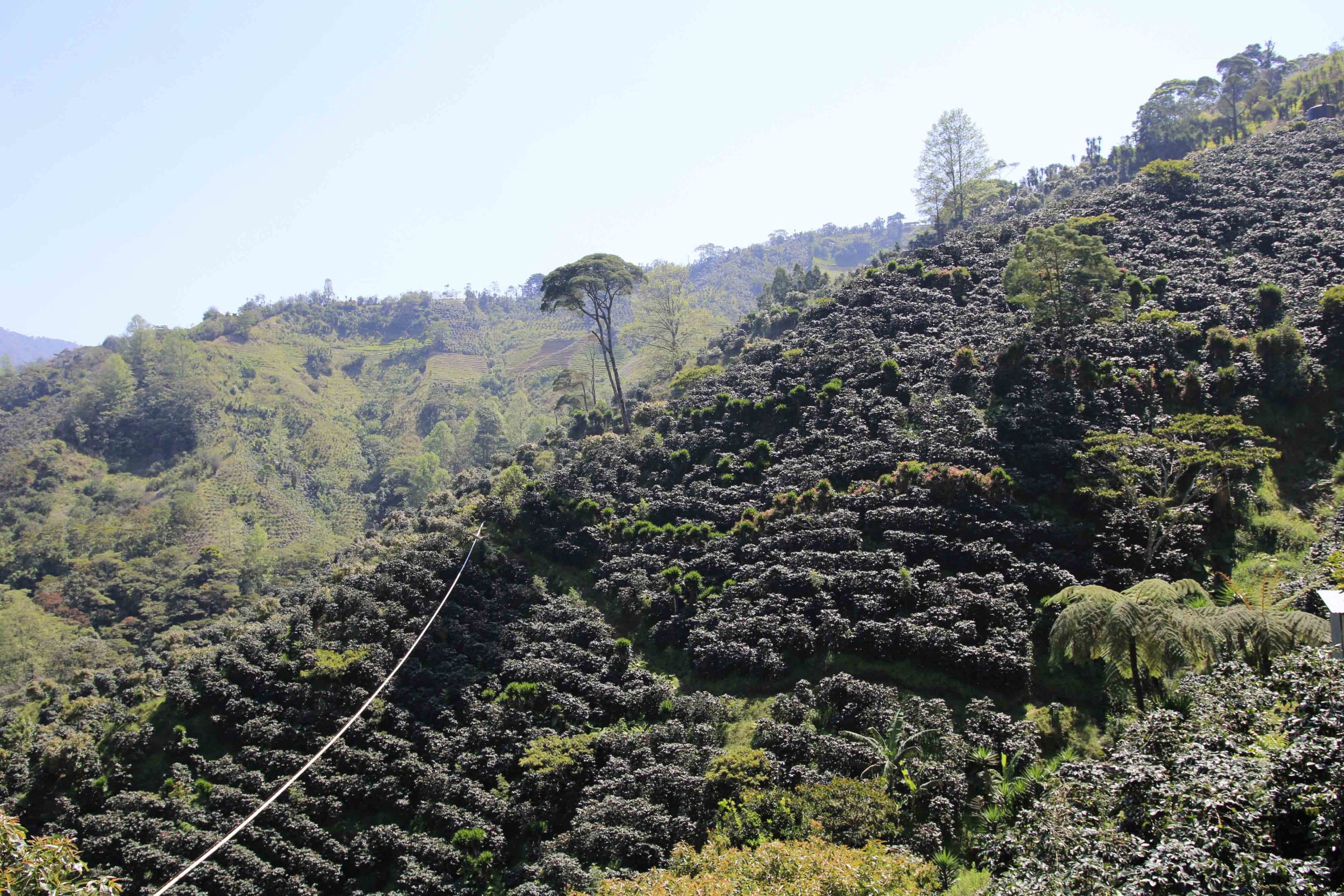
David explained that from his perspective there are other problems outside of coffee production. Large investments are needed and should come from the businesses themselves which are not profitable at present, or from loans which are almost impossible to obtain. He concluded that, given the current challenges faced by coffee growers, stemming from decreased international demand and labor shortages, the main concern for coffee growers is their own livelihood.
The management plan in the nature reserve mandates that all coffee farms within the protected area must implement sustainable environmental practices such as soil conservation, shade, restoration of water sources, reduction of agrochemicals as well as managing liquid and solid waste during production (farming) and processing. David said that these actions can be done by hand, but can be more effective with the right machinery, which most producers can’t afford.
We asked David about the possible illegal crop expansion of coffee and vegetables —prohibited in the management plan— and he’s very concerned though not much about coffee because “only the most passionate producers will continue in the industry” since there are many issues that come up when investing in such an unpredictable industry that lacks a labor force, among other problems. David is more concerned about intensive vegetable farming because it’s easier and generates profit faster.
“Right here in front of us, I have old pictures of this area when it was a virgin forest covered with trees,” David said as he pointed to a treeless area in the mountain.
Despite what David said, the management plan of the nature reserve of El Merendón mentions that while coffee plantations comprise 4% of the total area, crops such as vegetables, staple grains and pasture comprise 15%. Deforestation has increased in recent years and between 2016 and 2018, 184.70 acres of forest cover were lost.
Now, what’s alarming is that preliminary data from the 2022-2023 season showed worse results. During the first four months of harvest, exports have decreased by 19% compared to the same period the year before.
Given the crisis in the coffee industry, farmers in El Merendón to whom we spoke want to transition to other crops and grow more vegetables. Ebis, on the other hand, said that to grow vegetables, beans and corn you have to dig deep into the soil and use large quantities of pesticide which will cause more damage to the area. In addition, there are no strict controls for those crops so many pesticide containers that are toxic for humans are thrown near water sources.
Studies by the National Autonomous University of Honduras (UNAH-VS), included in the management plan, have shown that conditions of the main watersheds that supply San Pedro Sula and adjoining municipalities are not the best. Studies also showed that levels of phosphate and ammonium in all analyzed micro-watersheds exceed the normal range, and the Manchaguala watershed, which provides water to 150,000 inhabitants in the municipality of Cofradía, is the most affected.
Juan Lozano, engineer and coordinator of the Agroforestry, Environment, and Climate Change program at Ihcafe, said that instead of seeing the situation as a challenge to produce coffee in a protected area, we should see it as an opportunity for producers to market it as a product dedicated to protecting and restoring the environment. Additionally, areas degraded by other industries can be restored in the process. This could work as long as no more land is used for agriculture.
“I think it’s a marketing tool, we have to ensure that if we’re producing in a protected area, we are also taking care of it […] and we can offer better prices for coffee consumers who are concerned about the environment because there are markets that focus on sustainability.”
Juan explained that when studies of the forest cover in other protected areas of the country were carried out, for instance, in the Santa Bárbara mountain located in a department that neighbors El Merendón, they noticed that areas identified as coffee plantations and thickets in 2014 were part of the forest as of 2018, but what really happened is that they implemented agroforestry systems for coffee to grow in shade.
“Coffee agroforestry systems are one of the best strategies to restore the land and to make it more profitable, even the Institute for Forest Conservation (ICF) considers it a tool to restore ecosystems. If followed correctly this business can be highly productive and sustainable,” Juan said.
However, agriculture is not the only danger to the mountain range of El Merendón. In 2013, Congress approved a bill proposed by Marlon Lara, a representative of the Liberal Party, to reduce construction restrictions in areas within the mountain range.
The protected area of El Merendón previously covered an area of 39,976.71 acres, according to Decree 46-90, but now covers an area of 37,377.66 acres, according to Decree 334-2013. That’s a reduction of 2,599.05 acres, of which 1,575.79 correspond to the nature reserve and the rest to the area that overlaps with the nucleus in the Cusuco National Park.
Reducing construction restrictions in the area allowed the development of an urban project called “Ciudad Jaraguá,” which will be built right in the limits of the reserve, but, according to a report issued by the Secretariat of Natural Resources and Environment (SERNA), they had already determined in a 2019 inspection that those limits were not adhered to and a wall, almost 1 km long, was built within the protected area.
When the Criminal Investigation Agency (ATIC) apprehended nine people in 2023 for the alleged fraudulent construction as part of that project, Contracorriente interviewed Clariza Vega Molina, lawyer, former environmental prosecutor, and founder of the Honduran Institute of Environmental Law (IDAMHO). She said that there were ill intentions when the reform was approved to change the “Cota 200” (construction limits established in 1990) and it was meant to benefit politicians and businessmen.
“Although the reform was approved, there are laws and principles that have precedence and those permits shouldn’t have been issued because there is a superior law, the Constitution, which declares access to water as a fundamental human right. The goal is to protect the sources that supply water to the population of San Pedro Sula,” Clariza said.
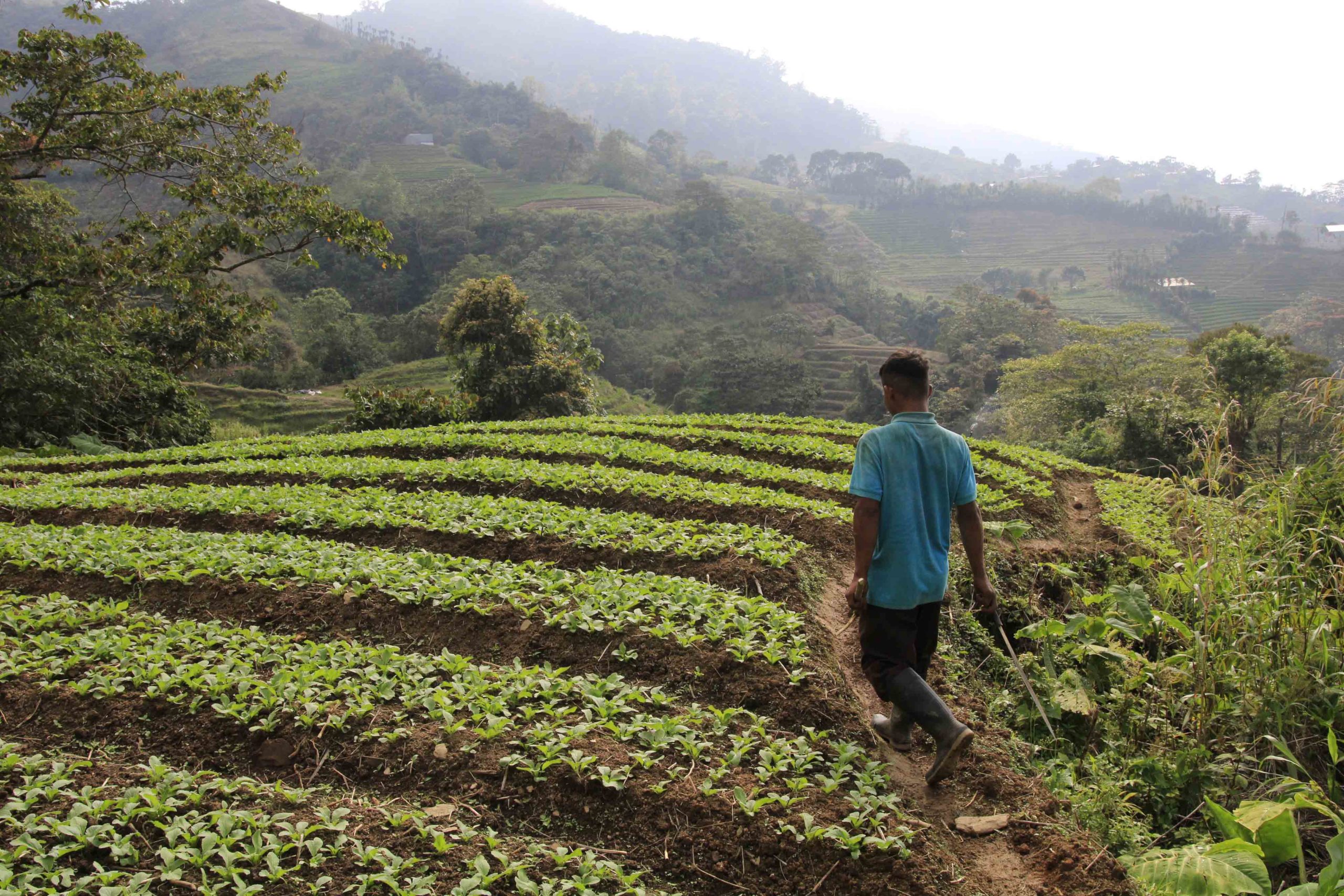
***
At the very beginning of the production chain, on the smallest scale and closest to the land, is Dunia, a 40-year-old woman who works as a coffee harvester at Miramar Farm in the middle of March. Samuel, one of her three sons, sits next to her. At age six, he is still youthfully innocent, yet shoulders a significant responsibility.
It was almost 2 PM and they were both carrying baskets around their waist full of ripe “coffee berries.” Dunia told us that she had been working for 8 years, during harvest season, in farms in El Merendón, but now works at Miramar Farm because it is the closest to her home.
If Dunia arrives early at the farm, she can collect about 9 or 10 cans of coffee and gets paid 70 lempiras (3 dollars) for each one. That’s her routine until the end of the harvest season in May, after which she stays at home to look after her children and take care of household chores. At times, she sells bread and tamales to make an additional income.

She enjoys harvesting coffee and loves to drink it, and if that was not the case she wouldn’t work as a harvester.
“We buy a quintal (46 kgs) of coffee a year, and I prepare, roast, and grind it myself at home,” Dunia said.
She and her husband owned a small coffee farm a few years ago, but sold it because it “was not profitable,” and she thinks that it’s worse now because supplies are very expensive.
After selling their farm, Dunia’s husband began growing vegetables, crops that could bring profits much faster, but it’s no longer profitable because fertilizer and seeds are expensive, and it’s also hard to find workers.
Now Dunia’s husband works at Miramar Farm and supports David the whole year throughout the entire production process.
In Honduras, in the mountain range of El Merendón, coffee is more than just a product, it’s a way of life and a legacy handed down from one generation to the next. Despite the difficulties and limitations of work, passion, and commitment are the engines that drive those who grow and produce coffee. But this coffee is consumed by people who buy it at prices Hondurans can’t afford.
Honduras is one of the main coffee exporters to two of the largest consumer markets in the world, Germany and the United States. The government announced that it will soon export to China, one of the fastest-growing markets where coffee consumption tripled between 2016 and 2020, according to reports by the Commission for Promotion of Export and Tourism in Peru.
Reports by Ihcafe showed that in the period of 2020-2021, Honduras exported 1,896 quintales to the United States, the largest consumer market of Honduran coffee in the world, and 1,842 quintales of green coffee beans to Germany, the second largest consumer market.
It turns out that Germany, a country that doesn’t produce coffee, generates more gross revenue by importing it from Honduras. This European country imports green or unroasted coffee from Latin American countries like Honduras, and, due to its large processing and roasting industry, is ranked fourth among countries making the most revenue for worldwide exports of coffee in all its presentations. Germany’s revenue is almost 3 billion dollars and in Honduras, where coffee producers struggle, it’s only around 1,350 billion dollars.
Some of the most well-known brands around the world such as Nestlé and Starbucks are end consumers of Honduran coffee. Between 2020 and 2021, NESTLE FOODS LTD. —the second largest end consumer— bought more than 613,000 quintales of green coffee to Honduras for 92.3 million dollars, while STARBUCKS COFFEE TRADING COMPANY —the seventh largest end consumer— bought 211,000 quintales for 32.8 million dollars.
Among the 10 main buyers of Honduran coffee, Nestlé is the only company that announced a campaign to reforest areas where coffee is grown and protected forests, among which El Merendón could be included. So far, however, they haven’t been involved in any efforts to protect the nature reserve.
Juan Lozano, engineer at Ihcafe, has been following up on this matter and as far as he knows, Nestlé is the only company that has shown interest in reforestation. He added that other companies should do the same because they’re responsible for the consequences that coffee production has on the country and from all actors in the chain of production, they benefit the most.
“Who is responsible for the environmental impact?” Those who acquire the coffee beans and sell them to the end consumer. The damage should be assessed as the coffee moves along the chain of production, the producer, those who process it, the exporter, and the end consumer. In the end, companies have to ensure that the products we consume do not cause as much damage to the environment,” Juan said.
He added that in the case of Nestlé, they want to mitigate the environmental damage they have already caused and that we should have preventive mechanisms in place. “One more thing, do they pay a fair price to our producers? I think that in our country the distribution and sale of coffee are not regulated and some people make more money. In the end, those who put in most of the work get paid less.”
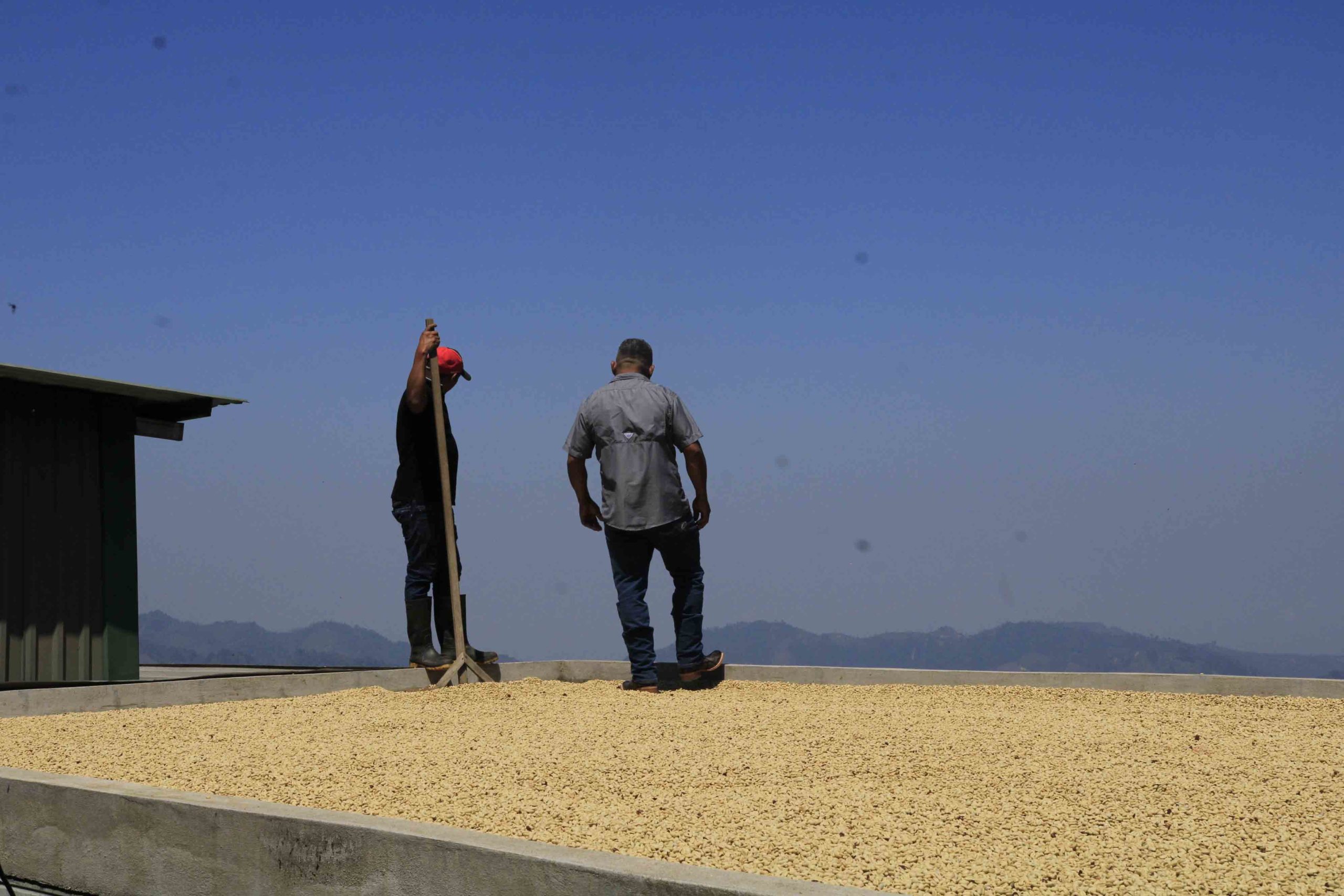
Don Alexis pointed out that producers in the area who have investments elsewhere will overcome the crisis, but most of the small producers, who make 95% of the industry, find themselves at serious risk.
“They don’t have enough income, so what will happen to them? They will not be able to fertilize the land and instead of producing 10 quintales they will produce 5 […] it’s going to be a problem because not enough income will be generated in the country. People will go to the United States and their relatives here will get comfortable, they will not work and that’s why there’s no workforce. We are close to San Pedro Sula and people say, “I’m not getting wet,” because it often rains in harvest season and there are better jobs in the city.”
Don Alexis has invested in other businesses so he’s not too worried. He stayed in the industry because he is passionate about coffee.
“I feel happy when I see the plants ripen and bloom because we work hard for two years to produce something slightly profitable, and that’s why we’re passionate about coffee.”
***
Sandra María Sánchez, a biologist, is the head of the Forest Conservation Institute (ICF), which oversees the protected area of El Merendón. She explained that the focus of cooperating with the executive branch is to simultaneously pursue both conservation and productivity.
Producers in El Merendón with whom we spoke are not aware of ICF’s plans in the area and say that personnel in charge of it are not in San Pedro Sula. However, Sánchez’s regional ICF office is located there.
Sánchez says that there is a strong economy in El Merendón and you can tell by the vehicles that take coffee harvesters to work every morning.
“At the institute, we don’t talk about absolute conservation, I mean, in an idealist way. We know that conservation and production go hand in hand, and our most important allies are the communities themselves because true conservation comes from them. If communities don’t feel that love and sense of belonging and way of life, nothing would be done.”
Sanchez explained that according to the evidence they have, coffee production and agroforestry systems promote and maintain diversity, and countries like Brazil, Costa Rica, and Colombia are proof of that.
“There are no publications arguing against this system of production, we’re talking about conservation and production, about maintaining an active biodiversity within those systems. We have a small Pandora’s box in this region, but we look at it with concern because we haven’t opened our minds and are still trapped in those traditional systems of conservation for the sake of conservation. We have to innovate and conservation practices should go hand in hand with production practices.”
In his farm, José has also implemented an agroforestry system, partly because buyers are interested in the conservation of the environment.
“I look at small children and think, when they grow up, what’s the world and the environment going to be like? There won’t be any water, I’m sure, because when I was a child there were water creeks, but now there aren’t any.”
Lastly, José said that there is no time frame in terms of income and profits, and he will certainly keep going because his passion for this crop is what drives him. So far, no storm, drought, plague or disappointments have been able to push him away from coffee.
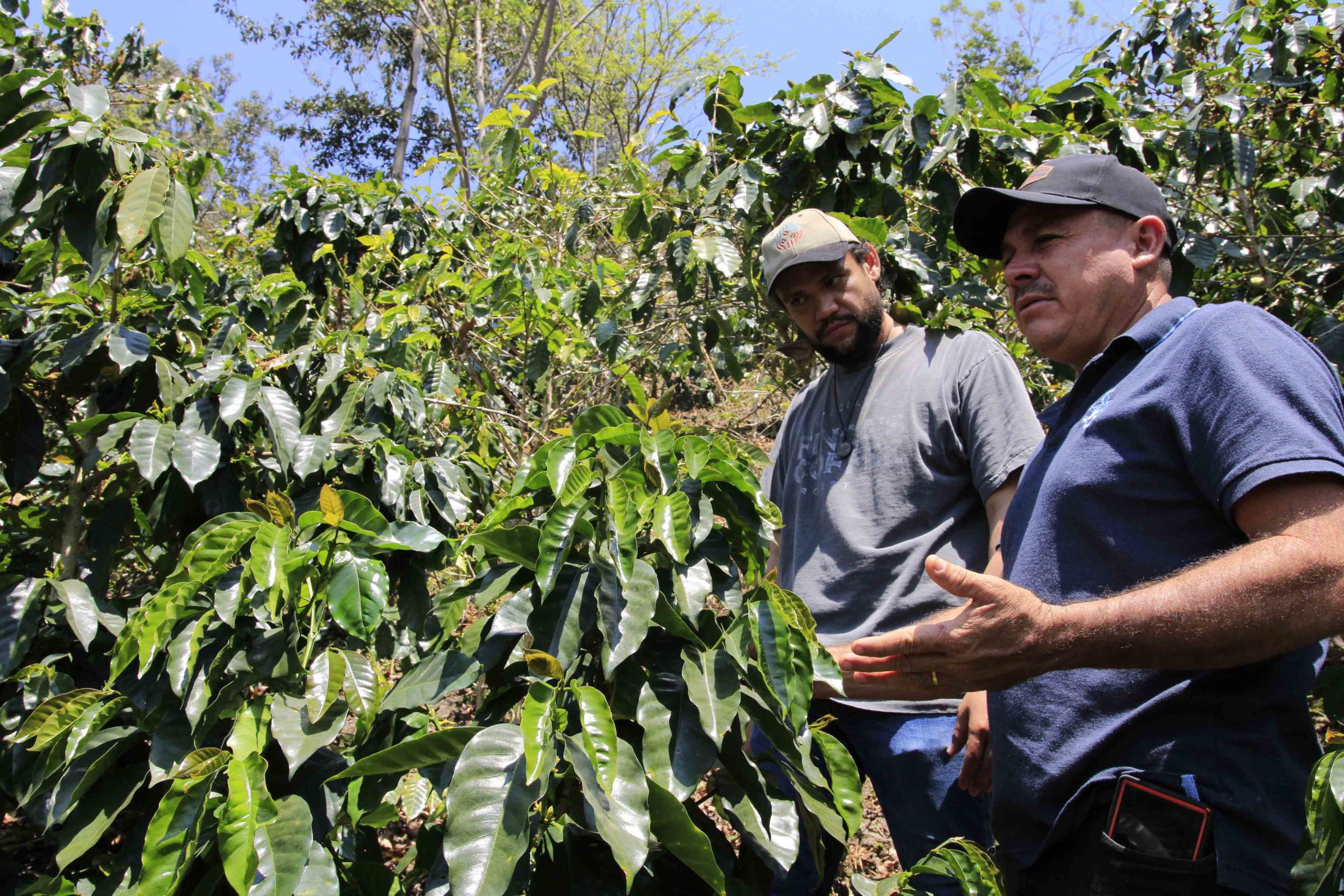
***
“We believe that we can produce high-quality coffee and find good buyers because we’re very fond of coffee and cannot just walk away from it, even if the situation is difficult. Prices suddenly rise and we will be making profits because, as they say, hope is what keeps you going,” José Angel explained as we finished our conversation at his house.
The fact that the price of Honduran coffee is affected by the New York Stock Exchange has always been a problem, among others such as migration.
Regarding this issue, José explained that he has lost crops extending up to nine blocks of land because he couldn’t find enough harvesters, so it was better to let the crops go to waste if they wouldn’t bring any profits.
According to José, this has been the case for many producers and while they find themselves in this situation, the government shows no interest.
“The government doesn’t know who we are and we pay taxes so that they can be well off, drinking Café Oro, or other garbage coffee brands,” he added.
José is talking about a very popular brand of Honduran coffee, which is mixed with other seeds and coffee waste during production. This brand was consumed in most Honduran households until a few years ago.
He explained that other producers in El Merendón are in a precarious situation. For instance, Don Alexis, who has been a coffee grower in the area for more than 20 years, said that it is difficult for other actors along the chain of production to offer better prices. He’s talking about intermediaries and exporters whom he accuses of not understanding how hard it is to grow coffee, and who, for that reason, don’t care about the problems producers have.
Don Alexis’ coffee has a strong flavor with a citric and fruit touch. He says that they used to consume the worst batch of coffee beans at home, but they now drink the best coffee produced at his farm.
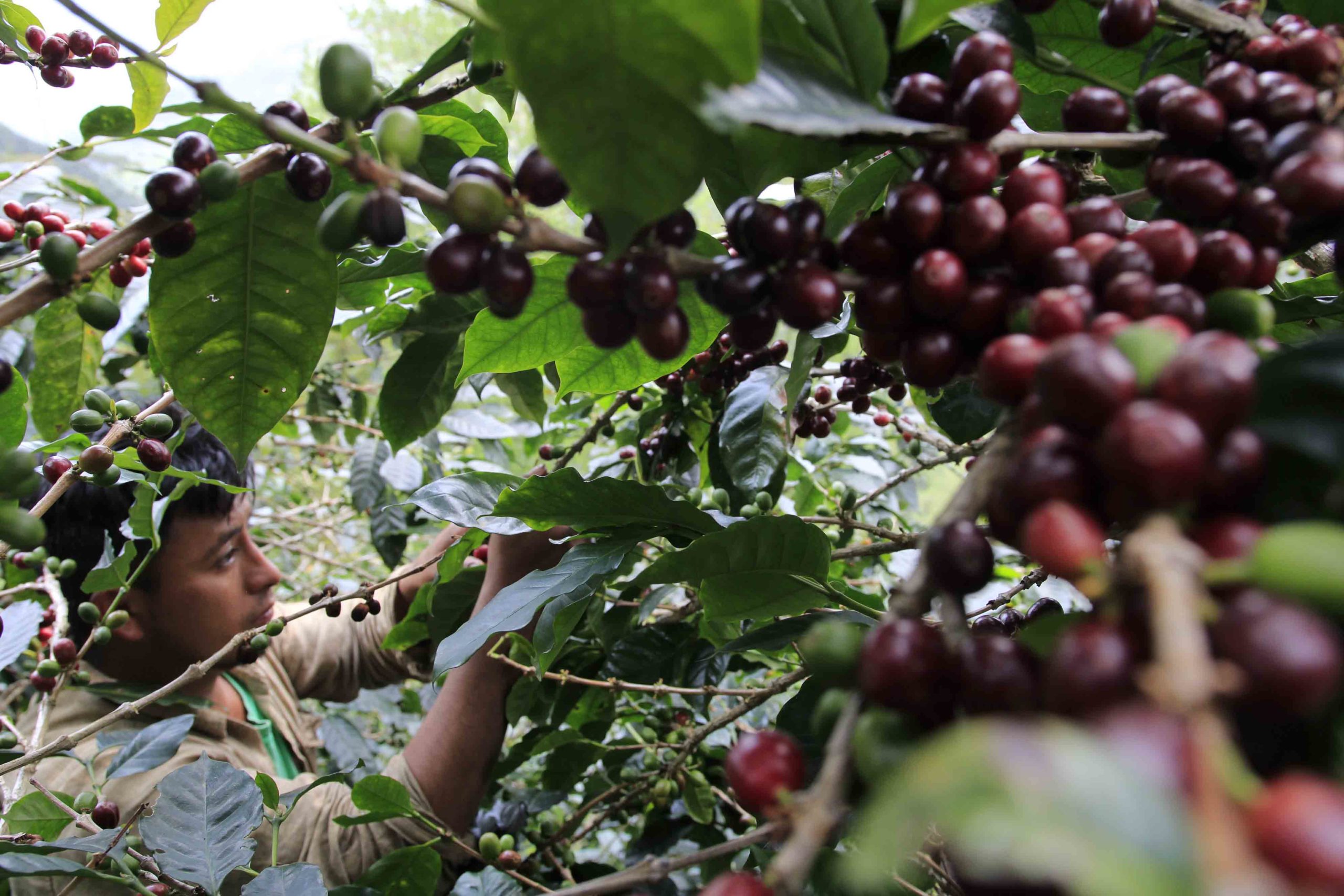
*Coffee grower, producer, and farmer used interchangeably throughout the article.

